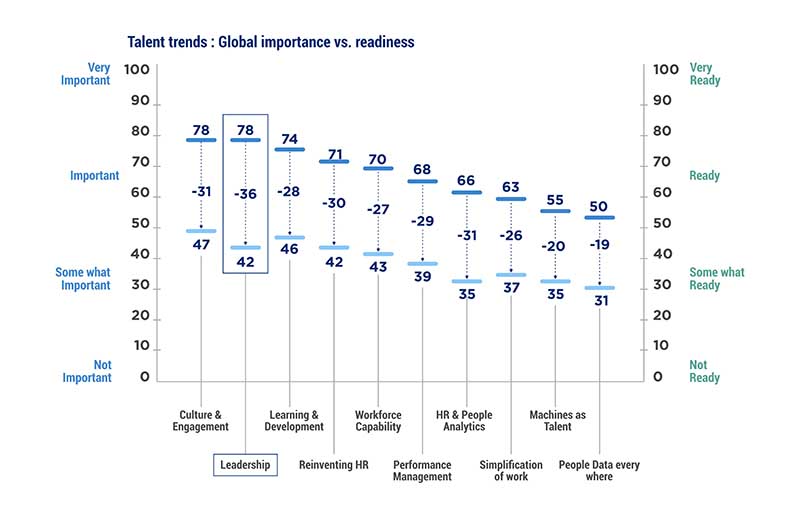
Unusual times demand unusual strategies. In VUCA (Volatility, uncertainty, complexity and ambiguity) world that which has worked in the past might not work again in the future. This statement is a mellowed down version of the fact “that which has worked in the past will not work again in the future.” The Big-Bang of disruptive technologies toppled our vintage castle of tried and tested strategies. Economies of scale are no longer as relevant and now even a novice in a garage is capable of giving a hard competition to “long-term” business survivors. These are the times of guerilla warfare in businesses and Che Guevara’s words “Live your life not celebrating victories, but overcoming defeats” and “In a revolution, one triumphs or dies” sound true to the point of a haunting. You don’t know who your enemy is and from where he will attack and you haven’t learned your moves yet.
From Megacorps to startups, no one is spared. Kodak, in 1998, had over 170,000 employees and sold 85% of photo paper used worldwide. Smartphone rose and relegated the giant to history pages. Tesla that was untouchable for decades is now boxed in by many new competitors. The global leader of 1900s and early 2000s mobile phones, Nokia failed colossally to estimate the power of data and had to wrap up its operation shortly after the introduction of Apple’s iPhone. Xerox that actually invented PC thought getting digital would be too expensive and it duly paid the price for miscalculation. Other prominent failures include Blockbuster (outcompeted by Netflix), Yahoo (refused to buy Google in 2002 and Facebook in 2006, we can’t fathom a bigger regret), Segway, IBM, JCPenney, Blackberry, Myspace, etc. The list is unending.
Rapid changes have thrust the HR at a privileged and a demanding position in the organizations as now they have to navigate both themselves and the organizations to newer goals and destinations. If we have to pack it all in a single pill, then we will hand it over to you as ‘agility’ which has become the crux of survival. Three prime drivers of this change are:
Big Data has meshed and is continuously weaving new devices and services and ML is capable of superhuman insights in almost no time. Together, the duo has cornered the distinction of time-honored knowledge to the boundaries of almost inconsequential experience. Digital invaders who know this secret are focused and nimble. They sprout out of nowhere. Entry for newcomers is easier. Talent managers fail to keep up with this churn that is running at hypersonic speed and lag drastically in predicting demand forecasts. A sudden need for recruiting arises and they find themselves in a reactive mode running helter-skelter to land up on a quick-fix somehow. These quick fixes come at the cost of mediocre or even poor quality talent and their inaptness reverberates long in the organization’s performance. But they are not the only ones quick fixing their crater. Top candidates are pursued by multiple recruiters at a time. For recruiters juggling with multiple vacancies simultaneously, follow-up interviews take longer than they should.
In the US, unemployment is at record low 3.7%. This translates into fewer talent and greater competition. Millennials who are always on the move and have set preferences cast in stone are hard to acquire and harder to retain.
Technology is crushing talent managers from both ends. On one hand, it is hard to find trained talent for rapidly changing technologies. On the other, emerging trends in the global talent acquisition technology such as machine learning, ATS and automated recruiting make survival difficult for smaller recruitment teams. Selecting the suitable technology and training staff to work on it add further complexity. Only 7% of HR professionals are effectively using people analytics for data analysis.
Talent managers are readying up for this war. They are exploring new avenues for sourcing (traditional methods aren’t effective anymore), sharpening their background screening, prioritizing their time by outsourcing their recruitment process, creating leverage by acquiring mobile talent, improving customer experience by using video interviewing tools and engaging new employees with better onboarding.
They are readying up for better leadership and HR processes.

Source 1: Deloitte’s 2015 Global Human Capital Trends – building leadership remains paramount and the top trend indeed though the readiness factor remains low.
Here’s what talent managers can do to further sharpen their approach:
Conduct an ROI on outsourcing. Identify the critical vacancies and the cost associated with their destitution. You may consider outsourcing your critical vacancies or the ones in which you lack expertise. Enterprise and Hybrid RPO can improve retention for you by streamlining your recruitment process.
Torchbearers are consistently revamping existing product and market structure. They are aggressively digging leverages in scope, scale and innovation. The ones who are able to market their innovation before their competitors gain maximum revenue, profits and market share. Having said so, without adequate backend and talent support from their talent managers they might now be able to materialize their ideas. Talent managers and innovators have become the two parallel wheels of any organization’s ride to the future. One weak tire and it is going to be a bumpy ride.
TMI’s certifications can ease this route for you and your organization.

CredBadge™ is a proprietary, secure, digital badging platform that provides for seamless authentication and verification of credentials across digital media worldwide.
CredBadge™ powered credentials ensure that professionals can showcase and verify their qualifications and credentials across all digital platforms, and at any time, across the planet.

Please enter the License Number/Unique Credential Code of the certificant. Results will be displayed if the person holds an active credential from TMI.